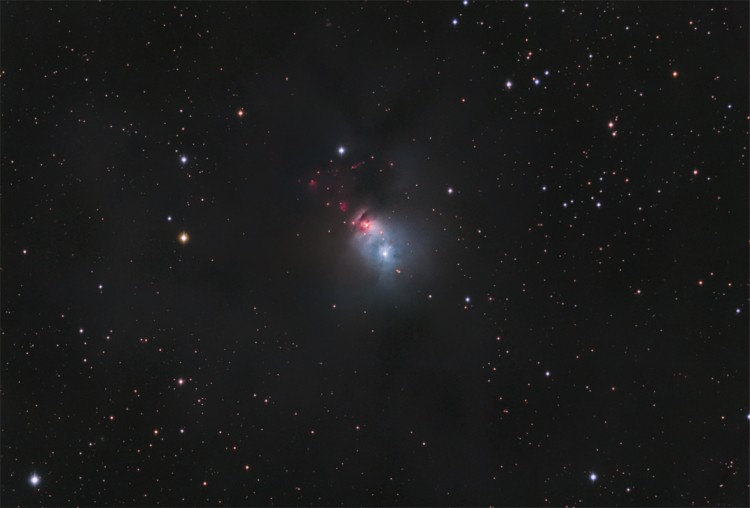Credit & Copyright: Visible Image (w/rollover) -
Steve Cannistra
(StarryWonders)
Infrared Image - R. A. Gutermuth (Harvard-Smithsonian CfA) et al. JPL-Caltech, NASA
Explanation:
Dusty NGC 1333
is seen in visible light as a
reflection nebula,
dominated by bluish hues characteristic
of starlight reflected by dust.
But at longer infrared wavelengths, the
interstellar
dust itself glows.
Moving your cursor over the picture will match up a
visible
light view with a false-color infrared image of the region from the
Spitzer Space Telescope.
The penetrating
infrared view unmasks youthful stars
that are otherwise obscured by the
dusty clouds
that formed them.
Also revealed are greenish streaks and splotches that seem to
litter the region.
The structures trace the glow of
cosmic jets blasting away
from emerging young stellar objects and plowing into the
cold cloud material.
In all, the chaotic
environment likely resembles one in which our own
Sun formed over 4.5 billion years ago.
NGC
1333 is a mere 1,000 light-years distant in the constellation
Perseus.
Infrared Image - R. A. Gutermuth (Harvard-Smithsonian CfA) et al. JPL-Caltech, NASA
1999 2000 2001 2002 2003 2004 2005 2006 2007 2008 2009 2010 2011 2012 2013 2014 2015 2016 2017 2018 2019 2020 2021 2022 2023 2024 2025 |
Январь Февраль Март Апрель Май Июнь Июль Август Сентябрь Октябрь Ноябрь Декабрь |
NASA Web Site Statements, Warnings, and Disclaimers
NASA Official: Jay Norris. Specific rights apply.
A service of: LHEA at NASA / GSFC
& Michigan Tech. U.
|
Публикации с ключевыми словами:
reflection nebula - infrared - star formation - Пылевая туманность - Области звездообразования - инфракрасное излучение
Публикации со словами: reflection nebula - infrared - star formation - Пылевая туманность - Области звездообразования - инфракрасное излучение | |
См. также:
Все публикации на ту же тему >> | |
